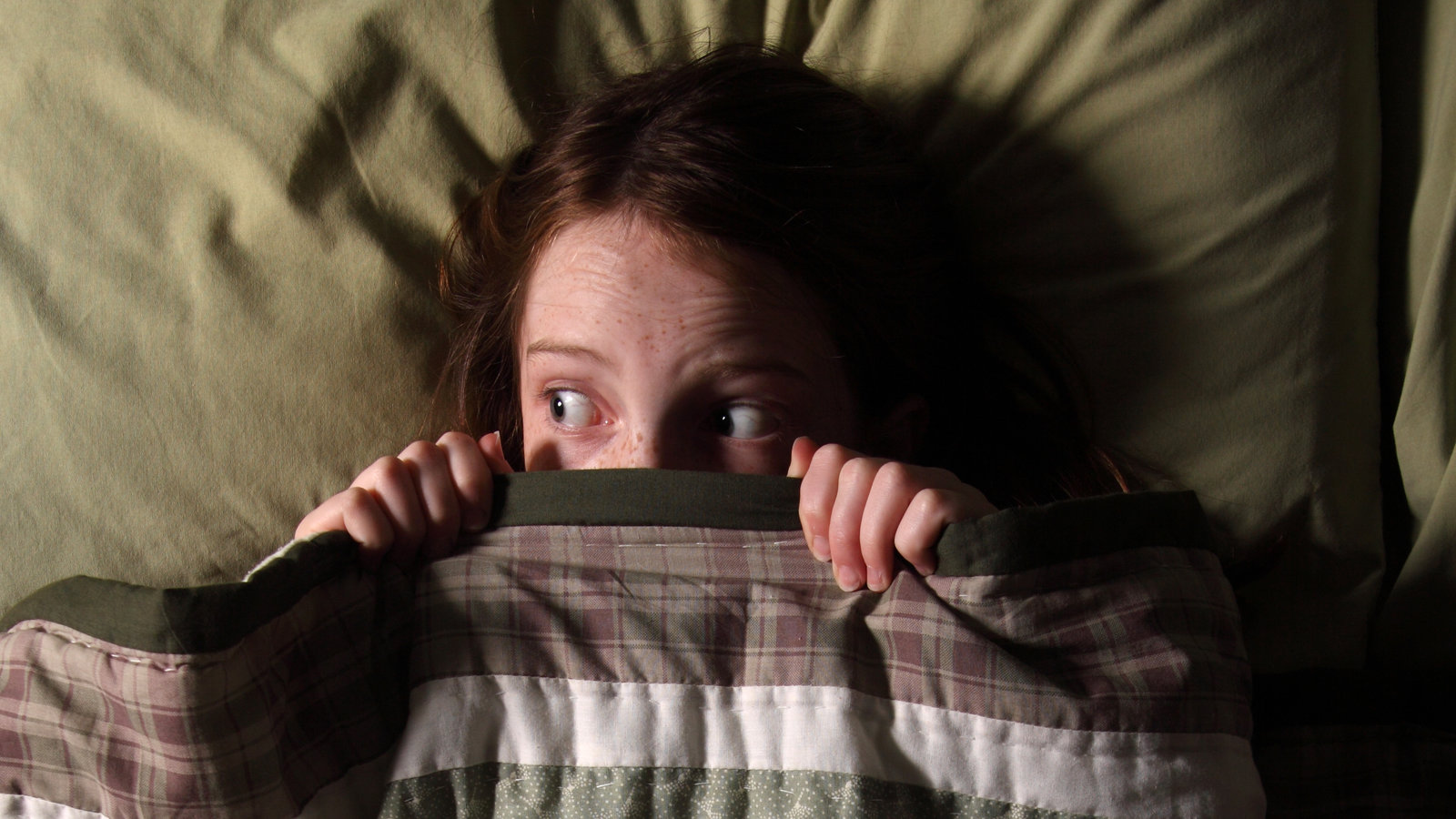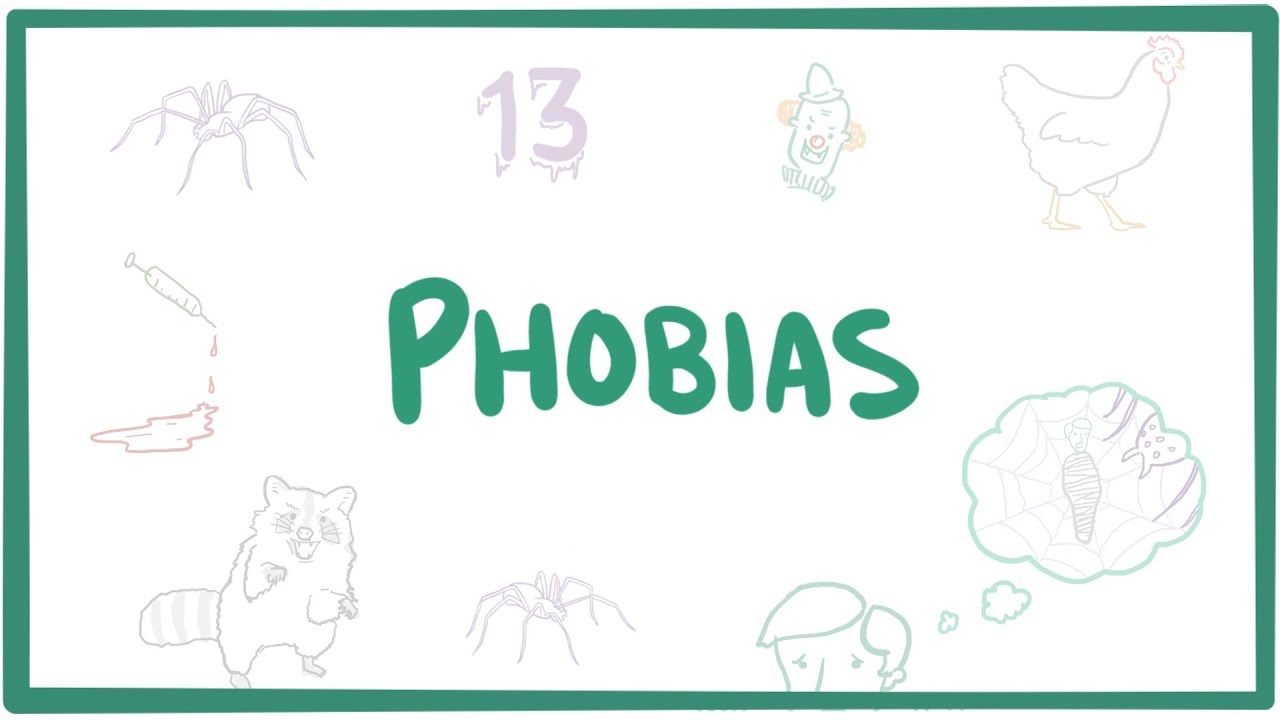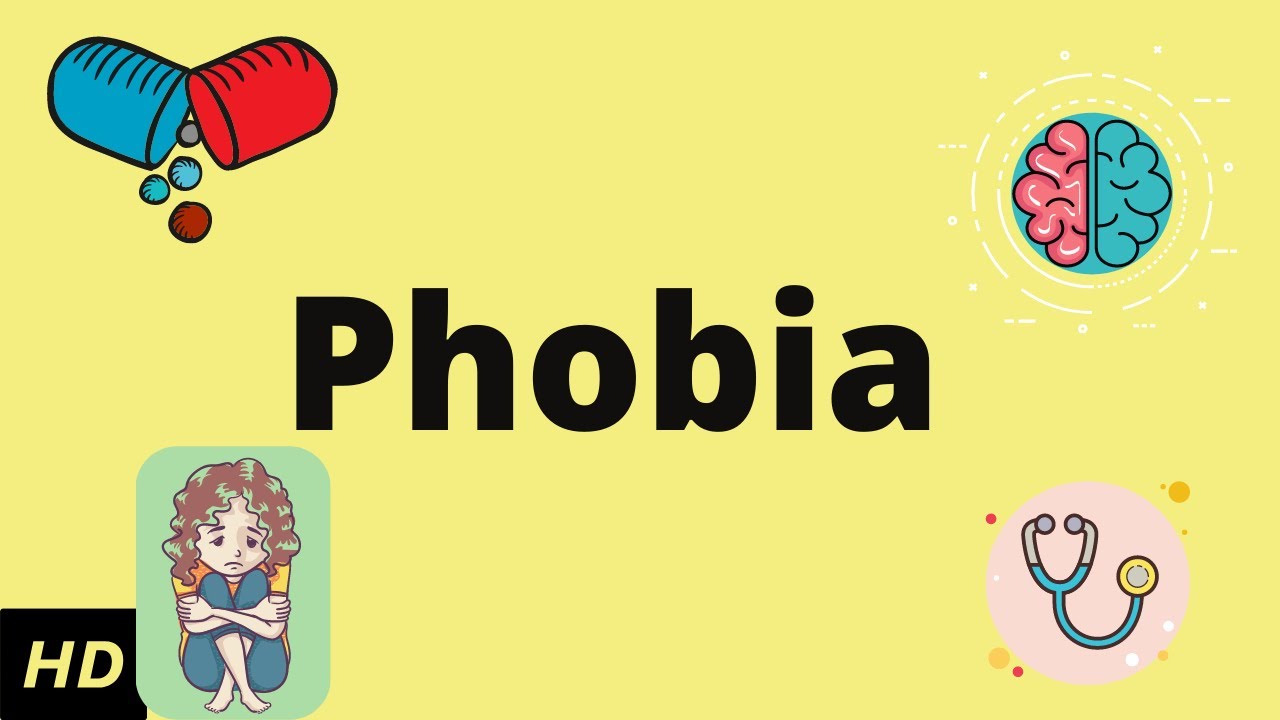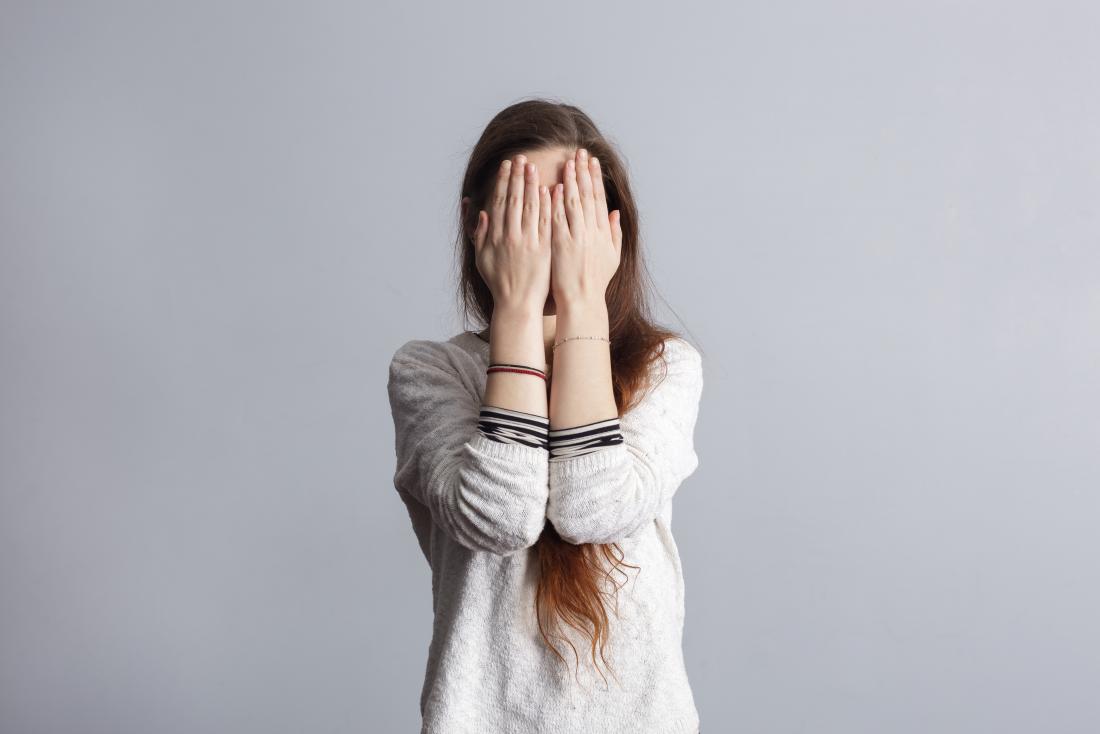Chronic Phobia - Causes, Symptoms, And Treatments
People who suffer from chronic phobia make important decisions about their daily lives based on what they perceive to be dangerous. The fearful anticipation outweighs the real danger posed by the source of the phobia. To put it simply, phobias are a mental illness. When confronted with the object of their fear, the person will feel extreme anguish.
Author:Suleman ShahReviewer:Han JuDec 29, 202223.1K Shares385K Views

People who suffer from chronic phobiamake important decisions about their daily lives based on what they perceive to be dangerous.
The fearful anticipation outweighs the real danger posed by the source of the phobia.
To put it simply, phobias are a mental illness. When confronted with the object of their fear, the person will feel extreme anguish.
Their normal functioning may be affected, and they may have panic attacks because of this.
As reported by the National Institute of Mental Health(NIMH), about 12.5% of U.S. adults will experience a specific phobia at some point in their lives.
What Is A Phobia?
A phobia is an abnormal and unreasonable aversion to anything. If you have a phobia, you might feel a strong sense of dread or panic whenever you're in the situation you fear the most.
The phobia could be of a certain place, event, or thing. When compared to other forms of anxiety, phobias are more narrowly focused. As with any disorder, the effects of a phobia can range from mildly unpleasant to completely incapacitating.
Many phobics are aware that their fear is unfounded, but they feel helpless to overcome it. Worry can disrupt a person's lifein many ways, including their professional and social interactions.

Phobias - specific phobias, agoraphobia, & social phobia
Types Of Phobias
The American Psychiatric Association (APA) classifies phobias into three distinct categories:
Social Phobias
Extreme and pervasive anxiety about interacting with other people is characteristic of social anxiety disorder. Such apprehension may be limited to one specific category of social encounters, such as giving a public speech. In other cases, people may feel too humiliated to do anything in public for fear of being judged.
Agoraphobia
Anxiety about being unable to escape a bad circumstance or a bad area. The phobic person may then start to avoid circumstances that trigger their fear. Some people with phobias have such an intense aversion to going outside that they never do so.
Specific Phobias
Specific object phobias involve an aversion to insects or animals. Common types of phobias include those related to certain situations, animals, specific medical conditions, or the natural environment. Insects, canines, needles, heights, tornadoes, and airplanes are just a few examples of the many things that people are afraid of.
This list of phobias is by no means exhaustive, but it does provide an overview of some of the more common ones that can have a significant influence on a person's quality of life. As you peruse this list, you may note that the majority of phobias can be classified into four broad groups:
- Fears of the natural environment
- Fears related to animals
- Fear related to medical treatments or issues
- Fears related to specific situations
Many of these termsare derived from Greek prefixes meaning "fear of" or "phobic about," and then end with the phobia suffix. Due to this, it is impossible to compile a comprehensive list of all possible phobias. As new names are given to them, specific phobias that haven't been named before could be added to any list of phobias.
Other Types Of Phobias
It's common for people to detest particular circumstances or things, but for a fear to be considered a true phobia, it needs to get in the way of daily living. The following are some more of the most widespread ones:
Glossophobia:The nervousness associated with presenting in front of an audience has a name: performance anxiety. When a person with social anxiety disorder thinks about having to speak in public, they have terrible physical symptoms.
Acrophobia: This is known as "fear of heights." People who suffer from this phobia steer clear of high places such as mountains, bridges, or buildings with upper stories. Some of the signs are feeling dizzy, lost, sweating a lot, and feeling like you're about to pass out or lose consciousness.
Claustrophobia:This is a fear of being confined or being in a small space. If you have severe claustrophobia and can't ride in cars or elevators because of it, this can be one of the worst parts of the condition.
Aviophobia: The fear of flying is another name for this condition.
Dentophobia: The fear of going to the dentist or having dental work done is known as dentophobia. In most cases, a terrible encounter at the dentist's office is the trigger for the development of this phobia. If it keeps you from getting necessary dental care, it can put your healthin jeopardy.
Hemophobia:This individual suffers from a fear of injury or blood. A person who is afraid of blood runs the risk of passing out if they come into contact with either their own blood or the blood of another person.

Phobia, Causes, Signs and Symptoms, Diagnosis and Treatment.
Arachnophobia:This refers to an irrational fear of spiders.
Cynophobia:This is a phobia related to dogs.
Ophidiophobia:Those who suffer from this phobia have a fear of snakes.
Nyctophobia: This phobia is characterized by an intense fear of nightfall and complete darkness. It nearly always begins as a normal, everyday worry when the person is a child. It is considered a phobia once the individual has passed the adolescent stage.
Causes Of Chronic Phobia
Phobias can be brought on by both genetic and environmental influences. The likelihood of a child having a phobia increases when the child has a close relative who suffers from an anxiety disorder.
A fear can be triggered by traumatic experiences, such as coming dangerously close to drowning. There are many things that can cause phobias, such as being in a small space, being on a very high place, being stung by an animal or insect, and being on a very high place. Phobias are common among those who live with chronic medical illnesses or who have persistent health worries.
After suffering a traumatic brain injury, a person has a significantly increased risk of developing phobias. Abuse of substances and depression are two more conditions that are linked to phobias. Phobias exhibit symptoms that are distinct from those of more severe mental diseases such as schizophrenia.
People who suffer from schizophrenia often experience hallucinations, both visual and aural, as well as delusions, paranoia, disorganized symptoms, and unpleasant symptoms, including anhedonia. People with phobias don't fail reality checks just because their fears don't make sense.
Symptoms Of Chronic Phobia
Phobias are associated with a variety of symptoms, including those of the body, the mind, and the behavior. Among the most common symptoms are:
- Chest tightness or pain
- Chills or hot flashes
- Choking sensations
- Confusion
- Difficulty breathing
- Dizziness
- Dry mouth
- Increased blood pressure
- Nausea
- Racing heartbeat
- Shaking or trembling
- Sweating
A person may experience dread, a sense of impending doom, fear of losing control, or even the feeling that death is approaching in addition to these physical symptoms. People with phobias often try to stay away from situations where they might have to deal with the thing or event that makes them feel anxious.
Treatment For Chronic Phobia
Phobias, despite the fact that they might be upsetting and cause significant disruptions in one's life, are treatable. Therapyand medicine are two of the many different treatment options that are available.
Exposure Therapy
Treatments based on gradual exposure are typically used initially for mild to moderate phobias. Prolonged exposure therapy involves repeatedly facing your fears one at a time. You could start by just thinking about the thing or situation that gives you a phobia. Then, you could move on to looking at pictures of it, and then you could be close to it.
Some potential exposure-based treatment options are as follows:
- In vivo exposure: This requires putting yourself in situations in which you are confronted with the object of your phobia in the present world.
- Virtual exposure: The practice of progressive exposure can now be done through the utilization of virtual reality.
- Systematic desensitization: This entails gradually exposing yourself to the thing that scares you until you become desensitized to it.
During this process, you will also practice relaxation techniques to help quiet your body when your fear response sets in. These skills can help you feel more in control of the situation.
Cognitive Behavioral Therapy
Fear can be alleviated by cognitive behavior therapy (CBT), which entails recognizing and changing the negative ideas at the root of your anxiety. When you become more aware of these thoughts, you might try to replace them with more positive and helpful ones.
Eye Movement Desensitization And Reprocessing
Rhythmic eye movement is used in eye movement desensitization and reprocessing (EMDR) therapy to aid in the processing and recovery from traumatic situations. It is most commonly used to treat PTSD, but it has also shown promise in dealing with other forms of mental illness, such as phobias.
Medications
Your doctor may recommend medication in order to alleviate some of the distress brought on by your phobia. SSRIs, beta-blockers, and anti-anxiety medications are just some of the possible prescriptions from your doctor.
People Also Ask
How Are Chronic Phobias Treated?
Counseling and other talk therapies can be highly useful in the treatment of phobias. Particularly helpful in dealing with phobias is cognitive behavioral therapy (CBT).
Are Chronic Phobias Genetic?
The development of a phobia has been shown to be affected by both nature and nurture, or genetics and the environment. This suggests that phobias can be passed down from one generation to the next.
Are You Born With Phobias?
Sometimes a traumatic experience might trigger a phobia. A person's phobia could have been taught to them by a parent or sibling at a young age (brother or sister) Some people seem to be more likely to have anxiety from birth, which suggests that genes may play a role.
What Happens If Phobia Is Not Treated?
Lack of treatment for a phobia can lead to severe impairment in many areas of a person's life, including their physical health, relationships with friends and family, academic performance, and/or employment.
Conclusion
Even while having chronic phobia might have a negative effect on one's quality of life, it is essential to keep in mind that one is not alone in dealing with this condition. Phobias are quite prevalent and can be effectively treated.
If you think that you could be suffering from some kind of phobia, you should make an appointment with a medical professional to get an additional diagnosis and treatment recommendations. You should be able to gain control of this fear, and with the help of professional counseling, you can.

Suleman Shah
Author
Suleman Shah is a researcher and freelance writer. As a researcher, he has worked with MNS University of Agriculture, Multan (Pakistan) and Texas A & M University (USA). He regularly writes science articles and blogs for science news website immersse.com and open access publishers OA Publishing London and Scientific Times. He loves to keep himself updated on scientific developments and convert these developments into everyday language to update the readers about the developments in the scientific era. His primary research focus is Plant sciences, and he contributed to this field by publishing his research in scientific journals and presenting his work at many Conferences.
Shah graduated from the University of Agriculture Faisalabad (Pakistan) and started his professional carrier with Jaffer Agro Services and later with the Agriculture Department of the Government of Pakistan. His research interest compelled and attracted him to proceed with his carrier in Plant sciences research. So, he started his Ph.D. in Soil Science at MNS University of Agriculture Multan (Pakistan). Later, he started working as a visiting scholar with Texas A&M University (USA).
Shah’s experience with big Open Excess publishers like Springers, Frontiers, MDPI, etc., testified to his belief in Open Access as a barrier-removing mechanism between researchers and the readers of their research. Shah believes that Open Access is revolutionizing the publication process and benefitting research in all fields.

Han Ju
Reviewer
Hello! I'm Han Ju, the heart behind World Wide Journals. My life is a unique tapestry woven from the threads of news, spirituality, and science, enriched by melodies from my guitar. Raised amidst tales of the ancient and the arcane, I developed a keen eye for the stories that truly matter. Through my work, I seek to bridge the seen with the unseen, marrying the rigor of science with the depth of spirituality.
Each article at World Wide Journals is a piece of this ongoing quest, blending analysis with personal reflection. Whether exploring quantum frontiers or strumming chords under the stars, my aim is to inspire and provoke thought, inviting you into a world where every discovery is a note in the grand symphony of existence.
Welcome aboard this journey of insight and exploration, where curiosity leads and music guides.
Latest Articles
Popular Articles
